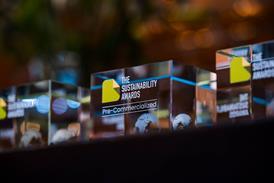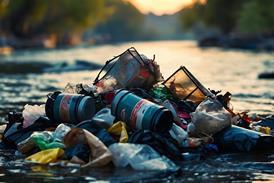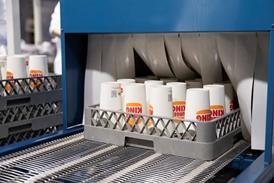
SÜDPACK Medica has unveiled a mono-polypropylene blister solution for dietary supplement packaging, intending to align with the Packaging and Packaging Waste Regulation’s recyclability requirements while maintaining contact safety and product performance.
Non-recyclable PVC-aluminium blister packs are still prominent in the nutraceuticals sector, SÜDPACK explains – yet the Packaging and Packaging Waste Regulation mandates that all packaging on the European market must be recyclable at scale by 2035, leading brands to reconsider their packaging designs.
In response, SÜDPACK has developed its NutriGuard blister concept. Since it is a mono-material solution, it is set to integrate seamlessly into existing recycling streams – and customers can reportedly implement contact-safe recyclate into their blister packs using SÜDPACK’s chemical and mechanical recycling processes.
Therefore, the solution is set to keep users compliant with Extended Producer Responsibility fees surrounding environmental impact and recycling.
“Nutraceuticals are essentially foods with medical or health benefits,” explains Jürgen Bodenmüller, business development director at SÜDPACK Medica. “We have in-depth knowledge of the regulations and requirements in this field.”
SÜDPACK highlights the pack’s transparency, which gives consumers a clear view of the product before it is unpackaged. While the push-through performance of the lidding film was described as a ‘key challenge’ during the development process, the final product is said to be comparable with conventional blister packs.
“We produce the compounds in-house, which allows us to adapt the recipes as needed,” Bodenmüller continues. “Soft capsules require a different mix than tablets or hard capsules.
“In addition, the barrier created by the lidding film must remain intact even after individual tablets are removed. The film should only break at the tablet’s position and not tear beyond that.”
For certain products, additional protective layers, water vapour barriers, and aroma protection can be implemented into the film. SÜDPACK also emphasizes NutriGuard’s printability, with no surface treatment required to customize the pack with recyclable, food-safe inks.
Additionally, the film claims to unlock low processing temperatures alongside a wide temperature window for thermoforming and sealing, which are set to improve its energy efficiency and facilitate easy handling.
SÜDPACK will attend Vitafoods in Barcelona on 20th – 22nd May 2025. Visitors are invited to booth 4A16, where the company will showcase NutriGuard and provide ‘expert guidance and engaging insights on sustainable packaging solutions’.
Its previous developments include PharmaGuard, another recyclable, mono-polypropylene blister solution for the pharmaceutical, medical goods, and life science industries. It is only said to require minor modifications to existing packaging lines, and a life cycle assessment says that it reduces CO2 equivalent and lowers water and energy consumption compared to other commonly utilized blister solutions.
Meanwhile, TekniPlex Healthcare and Alpek Polyester claimed to unveil the ‘world’s first’ pharmaceutical-grade PET blister film containing post-consumer recycled content at Pharmapack 2024. 30% of the film is said to be made from post-consumer recycled monomers, which the companies hope will keep customers compliant with the Packaging and Packaging Waste Regulation’s recyclability deadlines and PCR content baselines.
In other news, Amcor’s HDPE AmSky Blister System is now packaging TheraBreath’s Invigorating Icy Mint chewing gum. Reportedly, the system has received an HTP-Cyclos rating of 87% for the HDPE rigid recycling stream and 73% for mixed flexible plastics, and has been recognized by the Association of Plastic Recyclers for ‘meeting or exceeding’ the strictest Critical Guidance Protocol for the North American polyethylene film stream.
If you liked this story, you might also enjoy:
The ultimate guide to the Packaging and Packaging Waste Regulation in 2025
How are the top brands progressing on packaging sustainability?
Everything you need to know about global packaging sustainability regulation in 2025
The key to increasing the use of reusable packaging in supermarkets
















No comments yet